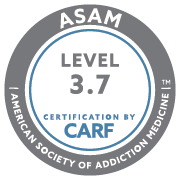 Sober Living For Women After Primary Treatment
Sober Living For Women After Primary Treatment
For many women, returning to their previous living environments after completing inpatient treatment services can mean diving back into triggers that may jeopardize their sobriety. Sober living homes offer a supportive and structured environment specifically tailored to the needs of women in recovery, providing a safe space where they can continue to build upon the skills and strategies learned during treatment while gradually reintegrating into society. This transitional phase not only reinforces the lessons gained in rehab but also fosters a sense of community and accountability, empowering women to navigate the complexities of life without substances.
What is Sober Living For Women?
Sober living refers to a house where sober individuals live together as roommates. There are a variety of ways which sober living homes operate: some are peer led, others have house managers, the size of the house can vary, and how many people live in a house. You will find a sober living home in a residential neighborhood, nestled in like any other house. The only difference is that there are several women living together in an effort to have more support in recovery. A sober living home still provides some structure with check-ins, chores, and recovery participation.
Why Live at a Women’s Sober Living House?

Stepping down to a sober living home after residential treatment offers a supportive community where women share experiences and get to engage recovery with others walking a similar path. The house provides a safe environment while learning the necessary skills to reintegrate into life fully. By residing in sober living, women have the opportunity to develop essential life skills, establish routines, and cultivate supportive relationships with peers, all of which are instrumental in maintaining long-term sobriety and successfully transitioning back into independent living.
Sober Living at New Directions For Women
What we offer at New Directions is like what is mentioned above a home in a residential neighborhood, a sisterhood of sober women walking a similar path, routine, and support. What we like about our home is that it is two blocks from the outpatient treatment location, one block from Newport Back Bay, and a few houses down from the residential treatment location. The house itself is a beautiful two-story house in a cul-de-sac with a large, private backyard. The rooms are spacious, the kitchen is large, and the shared living room the same. The neighborhood is peaceful and because our facility has been in this neighborhood for so long, the neighbors welcome us and are kind. During the holidays you will see the houses down the street decorated with lights and festivities. Though the stays in our sober living home are short, the transition period is sweet. Our home offers a safe place to land, continue recovery with your peers, before moving to your more long term living place.

We have a live-in sober living manager who helps manage the house and connects with the women for additional support. We require recovery meeting attendance, weekly chores, and a mandatory weekly alumnae meeting. Individuals who live in this house are typically participating in the High -Intensity Outpatient program and have access to their case manager and therapist for additional support. Check out our outpatient page to learn more about those services. The hope is that during The hope is that during HIOP individuals are supported in re-engaging work, school, and finding a long-term supportive housing option. The sober living at NDFW is meant to be short-term and a safe, stable step-down into what will be long-term recovery structures.
Frequently Asked Questions About Sober Living For Women
How does women’s sober living differ from co-ed sober living?
The main difference is that only females and individuals that identify as such live in a women’s sober living. The idea is to increase safety and to hold space for the challenges that all people experience in early recovery.
What are the rules in a women's sober living house?
Attend weekly required meetings, complete weekly chores, attend outpatient programming and be kind to others. Technology is allowed and driving is allowed after 30 days of sobriety and 5 days of living at the house.
Can I have a job while living in a sober home?
Yes and it will be important that the job doesn’t conflict with outpatient programming.
How long can I stay in a women’s sober living home?
Generally, individuals will stay up to a year, sometimes more in a sober living. In our house specifically, individuals stay with us about a month so they have increased structure and close proximity to the outpatient programming.
What is the cost of living in a sober home?
Sober living at New Directions for Women is $1250 per month. Other sober living homes in the area can range deeply from $800-$3,000 per month depending on the area and structure.
Can my family visit me in a sober living home?
Family is allowed to visit. We encourage all families to visit in the lawn and enjoy the manicured gardens. Keeping privacy for the others in the house is of utmost importance. Family visiting at other sober livings, not affiliated with ours, depends on their special rules. We also have a weekly family group on Saturdays that we encourage you and your family to attend.










